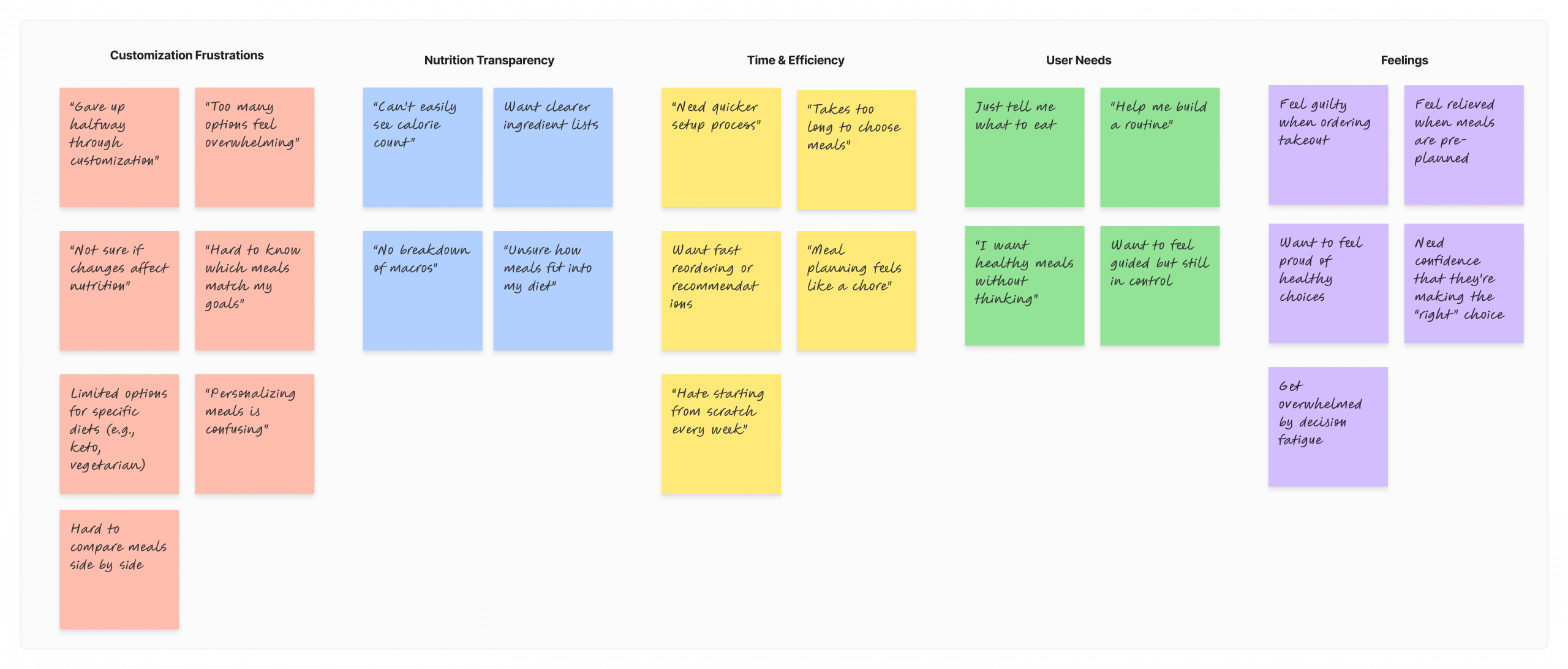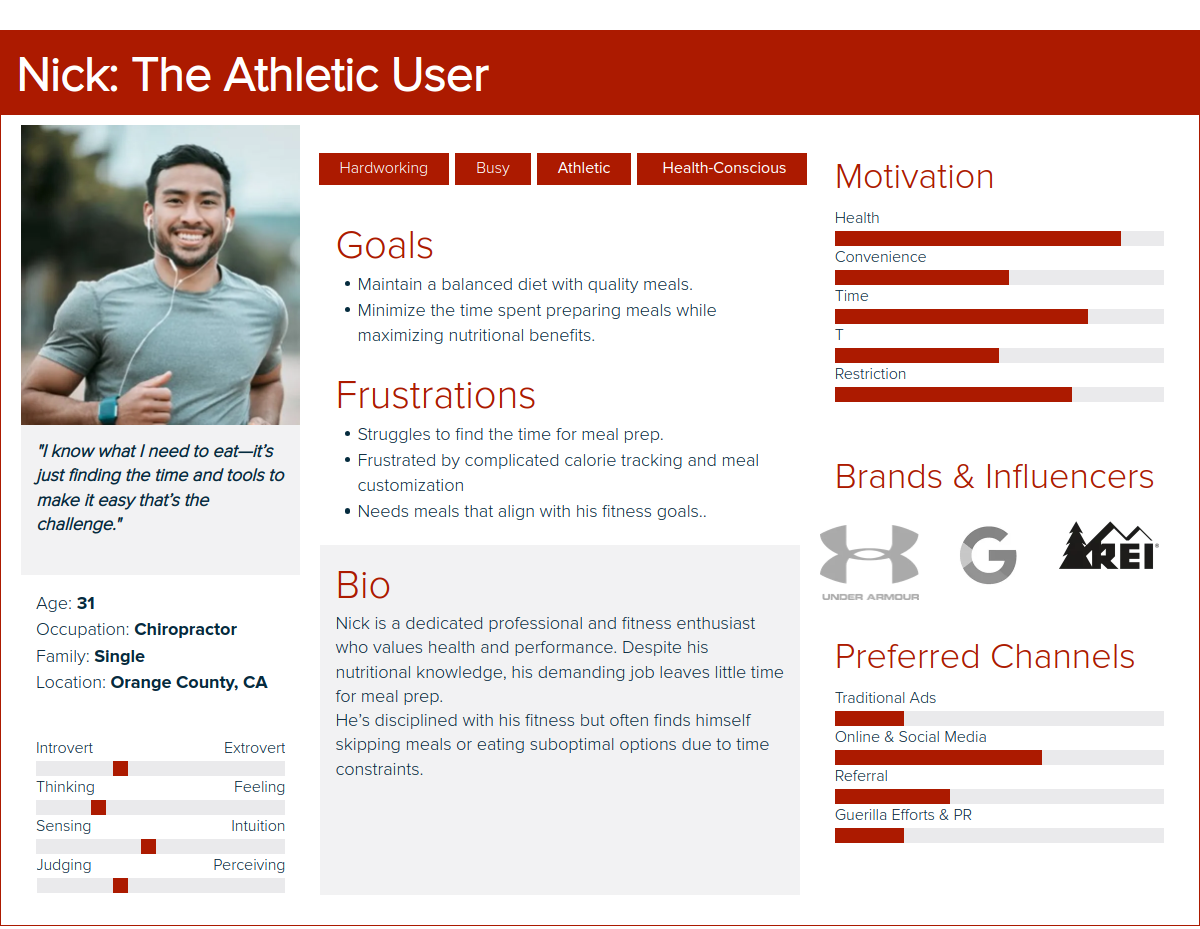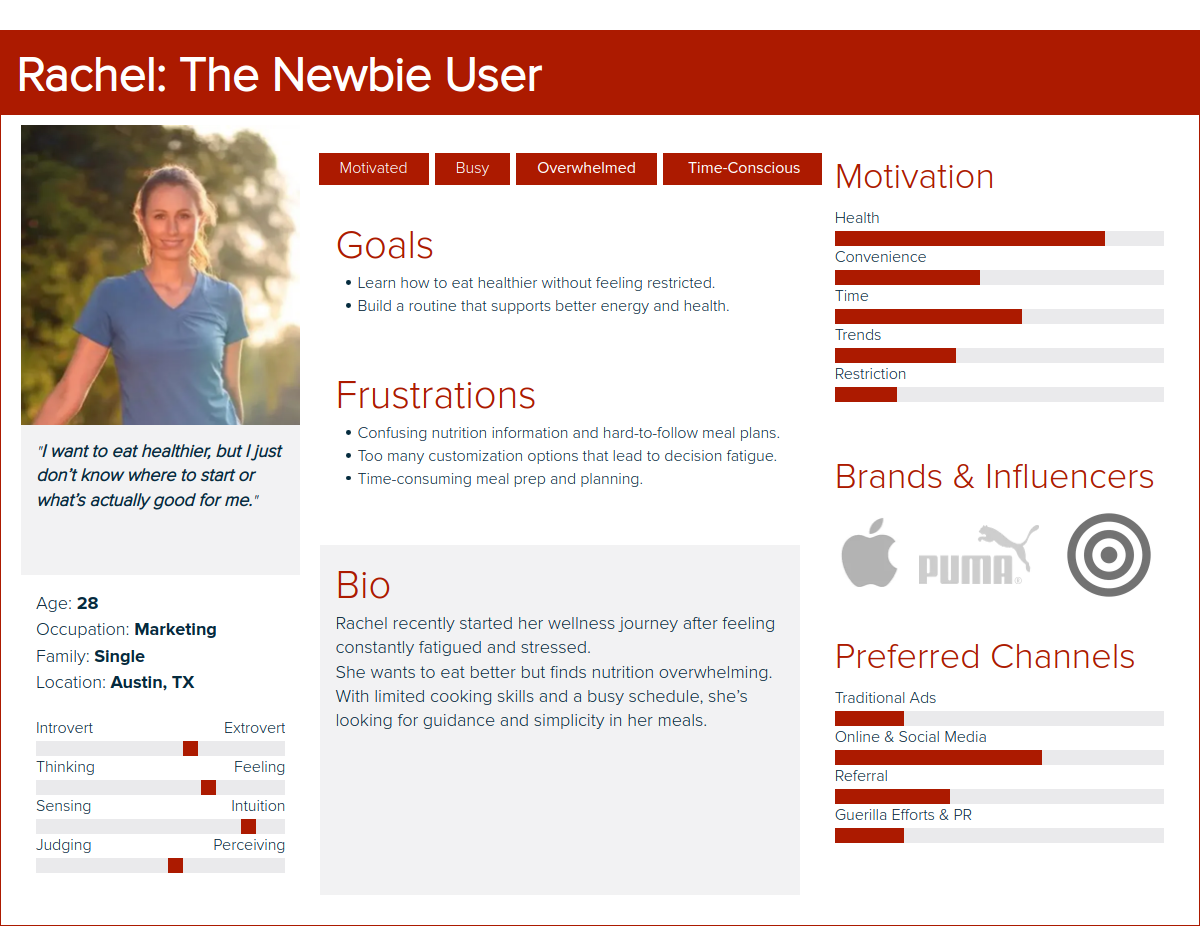Meats2U: Designing a Better Meal Prep Experience

Project Overview:
As part of a user experience design project, I worked on enhancing the Meal Prep feature for Meats2U, a company specializing in high-quality meat delivery. The goal was to improve the meal planning experience for customers who want healthier, convenient meal options that fit into their busy lifestyles.
Problem:
Meats2U, a meat delivery service, expanded into meal prep offerings in response to high customer demand, but the service saw lower-than-expected adoption. Despite interest, customers were abandoning their meal prep carts at a much higher rate than other products, (including recurring customers) raising concerns about the underlying issues and how to improve sales in this category.
Solution:
The solution focused on streamlining the meal prep experience and addressing common pain points.
The goal was to make meal planning easier and more accessible, ensuring users could quickly select meals, while offering clear nutritional information, and create meal plans that fit their lifestyle.
This solution also involved removing unnecessary steps in the ordering process to enhance the overall experience and reducing user frustration.
Design Process
We started by conducting remote usability testing and user interviews to understand how users interacted with the site and their challenges in meal prep.
In my design process, I adopted a focused approach inspired by the Double Diamond framework, but I began with user interviews rather than starting from broad discovery.
This deviation was intentional and justified by the context: the client already had an existing product, and the primary goal was not to explore a new problem space but to understand why the current solution was failing to meet user needs.
By initiating the process with direct interviews, I was able to quickly gather critical insights into user pain points and behavioral patterns, effectively narrowing down the problem space without going through the full divergent discovery phase.
This allowed for a more efficient use of time and resources while still aligning with the core principles of the Double Diamond—understanding the problem deeply before redefining and refining potential solutions.
Interviews:
We conducted five semi-structured interviews with target users to understand their meal planning habits, frustrations, and motivations.
I designed a set of questions to uncover the “why” behind users’ current behaviors, focusing on their desired improvements, specific frustrations, and ways to simplify the meal planning process.
Understanding their core motivations was also key to ensuring that the solutions I developed directly addressed their real needs.
Insight-Driven Question:
To uncover meaningful patterns in user behavior, I focused on asking insight-driven questions that explored their habits, frustrations, and motivations. These questions were designed to go beyond surface-level answers and reveal the "why" behind their decisions.
- Can you walk me through how you typically plan your meals for the week?
- What are the most challenging parts of planning or preparing your meals?
- What would make meal prep feel easier or more enjoyable for you?
- If you could design the perfect meal prep experience, what would it look like?
Takeaways:
Interviews provided valuable insights into the pain points, frustrations, and desires of the users.
Through these interviews, we identified two main user groups:
- Athletic Users: Individuals who already maintain a healthy diet and are knowledgeable about nutrition.
- Newbies: Individuals who are new to healthy eating and need more guidance in meal planning.
We also noticed that meal prep was perceived as a complicated process, particularly when users had to customize multiple meals or track calories manually.
Interviews provided valuable insights into the pain points, frustrations, and desires of the users.
We also noticed that meal prep was perceived as a complicated process, particularly when users had to customize multiple meals or track calories manually.
Despite differences in experience, both groups expressed similar concerns around restricted diets, time constraints, and a desire for simplicity.
Frustrations:
- Overwhelming customization process.
- Difficulty in calculating calories and finding nutritional information.
- Time-consuming and complicated process for ordering meals.
Motivations:
- Desire for convenience and health-focused meals.
- Need for easily accessible, high-quality ingredients.
Affinity Diagram:
Using affinity diagramming, I organized insights from user interviews by grouping related observations and themes. This method helped reveal key patterns in user behavior, such as frustrations with meal customization, confusion around nutritional information, and a strong desire for a more efficient and simplified meal planning experience. These themes provided a clear foundation for identifying user needs and informing design decisions.

Persona:
Detailed personas were created to understand the target audience’s behavior, concerns, and goals—centered around a busy individual who wants to stay healthy but struggles to find time to cook and maintain a balanced diet.


To validate the design and improve performance, the next phase involves conducting usability tests.
Usability Testing:
To ensure the product met real user needs, I conducted usability testing to observe how users interacted with the site and features in a realistic setting. This was a crucial moment to validate design decisions and uncover usability issues. I asked participants to complete the following key tasks:
-
Find and customize a meal that fits your dietary preferences.
-
Add three meals to your cart and begin the checkout process.
-
Locate nutritional information for a selected meal.
-
Reorder a previous meal from your order history.
-
Explore meal options that match a “high-protein” goal.
Insights:
Usability tests revealed that users found the original meal prep process confusing and time-consuming. Two testers pointed out the unnecessary steps in the "Meal Plan" page, which led to the update of a simpler interface with faster meal selection. The key takeaway was that users valued transparency in nutrition and ease of use above customization complexity.
Takeaways:
Usability testing revealed several key insights into how users interact with the meal prep platform.
Participants often felt overwhelmed by too many customization options and struggled to find clear nutritional information, leading to hesitation or cart abandonment.
While users appreciated the idea of tailored meals, the process lacked clarity and efficiency.
Many expressed a desire for a more guided experience with simplified choices and quicker access to health-related details.
These findings highlighted the need to streamline the user flow, reduce cognitive load, and provide clearer, more supportive feedback throughout the meal selection process.
Design Iterations & Updates
Based on usability testing feedback, several key updates were made to improve the meal prep experience:
-
Simplified Meal Selection: Reduced the number of steps required to select meals, particularly for customers who preferred pre-made options.
-
Nutrition Information: Integrated clear, accessible nutritional charts for all meal options, enabling users to make informed choices.
-
Updated Layout: Allowed for more meals to be displayed on a single page, reducing the time spent scrolling.
Next Steps...
To validate the design and improve performance, the next phase involves conducting usability tests.
Usability Testing:
The next phase involves further refining the design and implementing additional features based on user feedback, including an even more intuitive meal planning interface and additional customization options. Usability testing will continue to ensure that users can seamlessly plan and order meals without friction, improving overall customer satisfaction and conversion rates.
